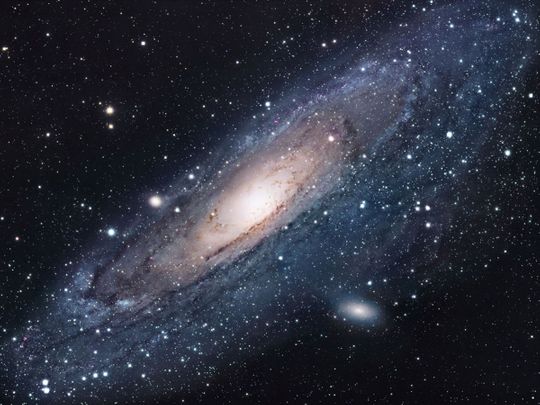
From megaparsecs, which measure the enormous distance between galaxies, to angstroms, which measure the tiniest distance between atoms, can you find all the units of measurement in today’s Word Search?
Click start to play.
The unit called megaparsec is massive – it equates to one million parsecs or 3.26 million light-years. Astronomers have found that the Andromeda galaxy is about 0.89 megaparsecs away, making it one of the 50 Local Group galaxies that are ‘closest’ to the Milky Way (though still millions of light-years away!). Interestingly, Andromeda is considered to be the farthest thing in the universe that we can observe with the naked eye from Earth.
With roughly one trillion stars, Andromeda is the largest galaxy in the Local Group. Every day, it moves closer and closer to our galaxy, the Milky Way, approaching at a speed of around 110 kilometres per second! Scientists estimate that in approximately 3.75 billion years, the Andromeda and Milky Way galaxies will collide and merge to form a giant elliptical galaxy.
Speaking of the Milky Way, according to the American Museum of Natural History website, the galaxy gets its name from the Greek deity Hera, who apparently sprayed milk across the sky in a pattern that resembles it. In China, however, it is called the “Silver River” and in the Kalahari Desert in southern Africa, it is called the “Backbone of the Night.”
The Earth is located on one of the arms of the spiral-shaped Milky Way. Like the other stars in our galaxy, the Sun and the solar system travel at a speed of 828,000km/hr as the massive galaxy rotates in space. Even at this speed, it would take about 230 million years for our solar system to travel all the way around the Milky Way!
Head over to the Word Search to appreciate the mindboggling distances mapped out in our cosmos. Let us know if you enjoyed it at games@gulfnews.com.







